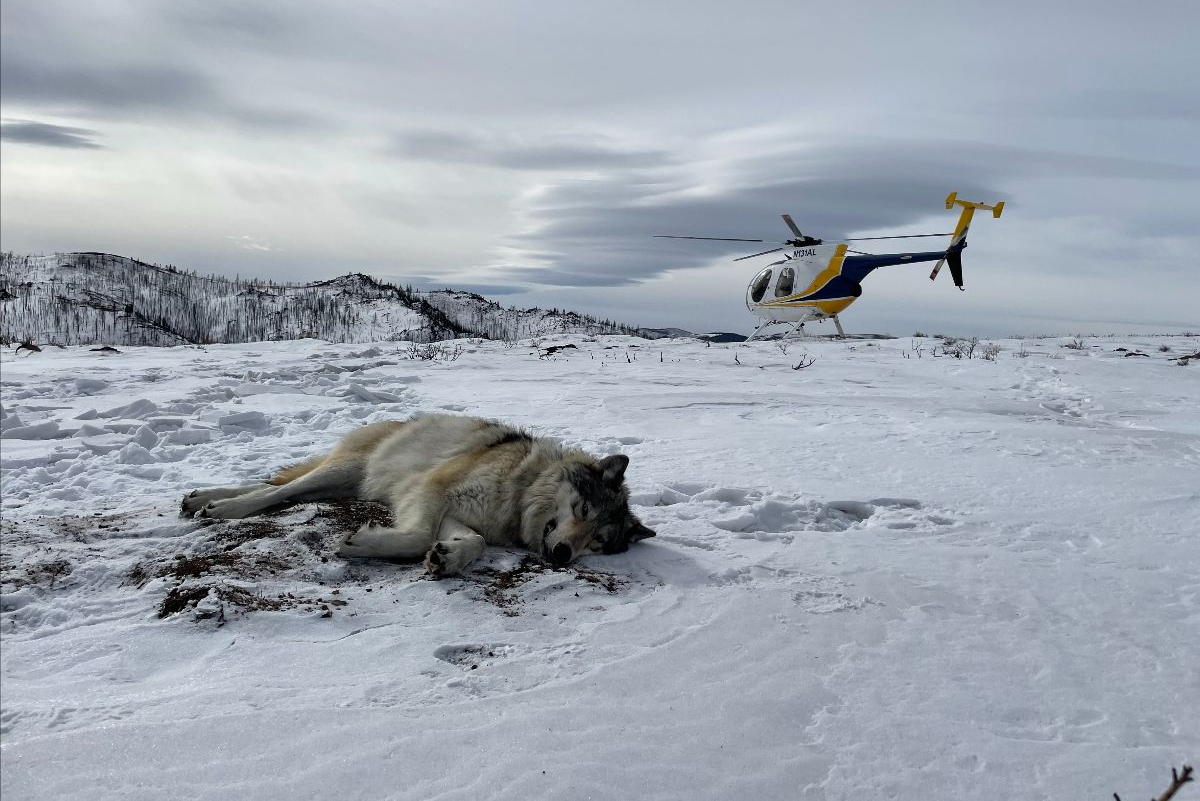
Colorado wildlife officers are working with their Wyoming counterparts to follow up on a report of wolves killed near the state border.
The inquiry appears focused on a heavily monitored wolf pack living in Colorado’s North Park region. On Wednesday, The Coloradoan of Fort Collins published a story saying it had received reports of three wolves being shot “just over the border in Wyoming.” No source was cited by the paper.
Travis Duncan, a spokesperson for Colorado Parks and Wildlife, confirmed his agency had received information indicating three black, adolescent female wolves were legally killed in Wyoming. While Colorado wildlife officers can't confirm the identity of the wolves, Duncan said "we believe it may have been part of the North Park pack."
"It's not uncommon for the North Park pack to travel into and out of Wyoming," Duncan said. "Until such a time where CPW can observe this pack in Colorado, no confirmation is possible."
Wyoming officials did not respond to a request for comment.
If the wolves were killed in Wyoming, it’s unlikely anyone broke the law
The predators enjoy vastly different protections on either side of the Colorado-Wyoming border.
In Colorado, the animals are protected under state law and the federal Endangered Species Act. Killing a wolf can result in a $100,000 fine, up to a year in prison and the potential loss of hunting privileges.
Federal protections don't apply in Wyoming. The state has designated about 85 percent of its territory as a "predator zone," where wolves can be killed at any time without a hunting permit. The area includes the entire region along its southern border
This isn’t the first time questions have swirled around wolves living near the border. In 2020, Colorado Parks and Wildlife announced a separate pack had arrived in the state’s far northwest corner, marking the state’s first known wolf family since hunters and trappers eradicated the species in the 1940s.
But the so-called Pioneer pack dwindled in the months following the announcement. Colorado Parks and Wildlife later learned the U.S. Fish and Wildlife Service was investigating reports of three wolves killed near the border. Neither agency ever released a conclusion about the possible killings, but independent biologists working in the region could only find a single wolf by the following summer.
While the Pioneer pack disappeared, the North Park pack proved more resilient
In 2019, wildlife officers announced a black wolf wearing a telemetry collar appeared to have taken up residence in Jackson County. Colorado Parks and Wildlife later identified it as F1084 — a former member of the well-monitored Snake River pack living near Teton National Park.
Last year, Colorado Parks and Wildlife announced the female wolf had not only found a mate, it had given birth to the state's first known litter of wolf pups in more than 80 years. Governor Jared Polis celebrated the news in a Facebook post, dubbing the new couple "John and Jane wolf."
The pack has continued to make headlines since then. Wildlife officers confirmed the wolves likely killed both cattle and dogs in the region. Don Gittleson, the rancher hit hardest by the depredations, has even employed guard donkeys to help protect his livestock.
While the wolves have been recognized as Colorado's only known pack, their territory extended into southern Wyoming. The animals lived so close to the border that Colorado wildlife officers chased one of the predators across the state line to attach a tracking collar in 2021.
The loss of those wolves would be a setback as Colorado tries to become a safe haven for gray wolves. Colorado Parks and Wildlife plans to boost those efforts by reintroducing wolves on the Western Slope by the end of 2023, following through on ballot initiatives narrowly approved by Colorado voters.
Mike Phillips, the executive director of the Turner Endangered Species Fund and a wolf biologist who supported the ballot initiative, said any wolf losses only boost arguments for an aggressive reintroduction program.
“Regardless of details, the current state of affairs illustrates that when wolf numbers are low, unexpected events can prevent population growth. The best way to certainly and cost-effectively restore the species to Colorado is to release several dozen wolves over a relatively short period of time,” Phillips said.
Colorado Parks and Wildlife plans to release a draft plan for wolf management and reintroduction in December.
Editor's note: This story was updated Oct. 28 with additional comment from Colorado Parks and Wildlife.
Gray Wolves in Colorado
Wolves are finding their way back to Colorado after an 80-year absence. At the same time, state wildlife officers are carrying out a voter-approved initiative to reintroduce the predators by the end of 2023.
- A test of ‘ballot box biology’: Colorado’s 2020 reintroduction initiative marked the first time voters, not wildlife managers, ordered the return of an endangered species.
- Wolves have returned to Colorado without human help. One pack has migrated into Jackson County and started breeding. Another mysteriously disappeared in Moffat County.
- Are wolves even endangered? The predators remain protected under state law, but their status as a federal endangered species remains locked in complex court battles.
- Colorado ranchers are getting ready: Livestock producers are worried about losing animals. One has tried to protect his cattle with guard donkeys.








